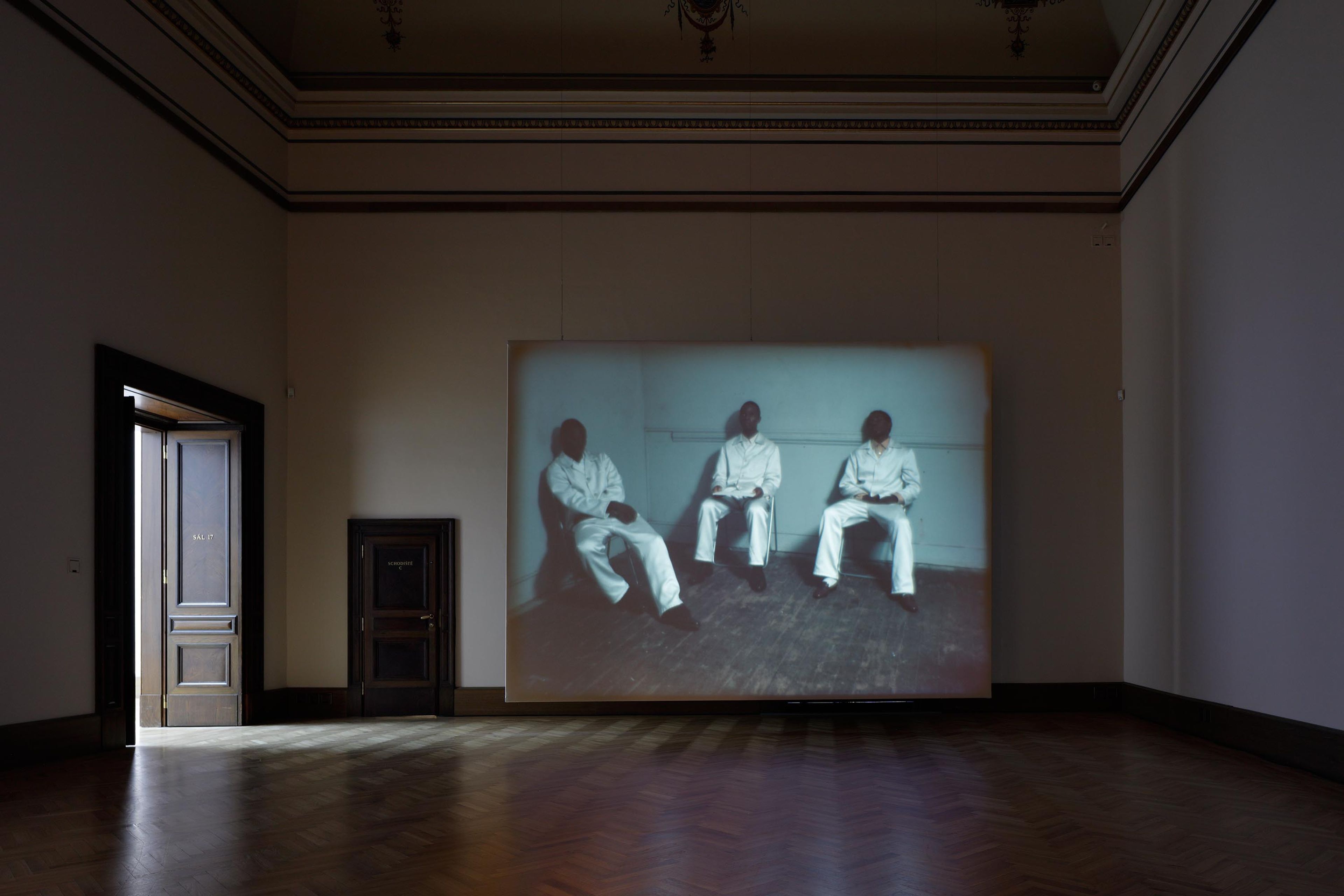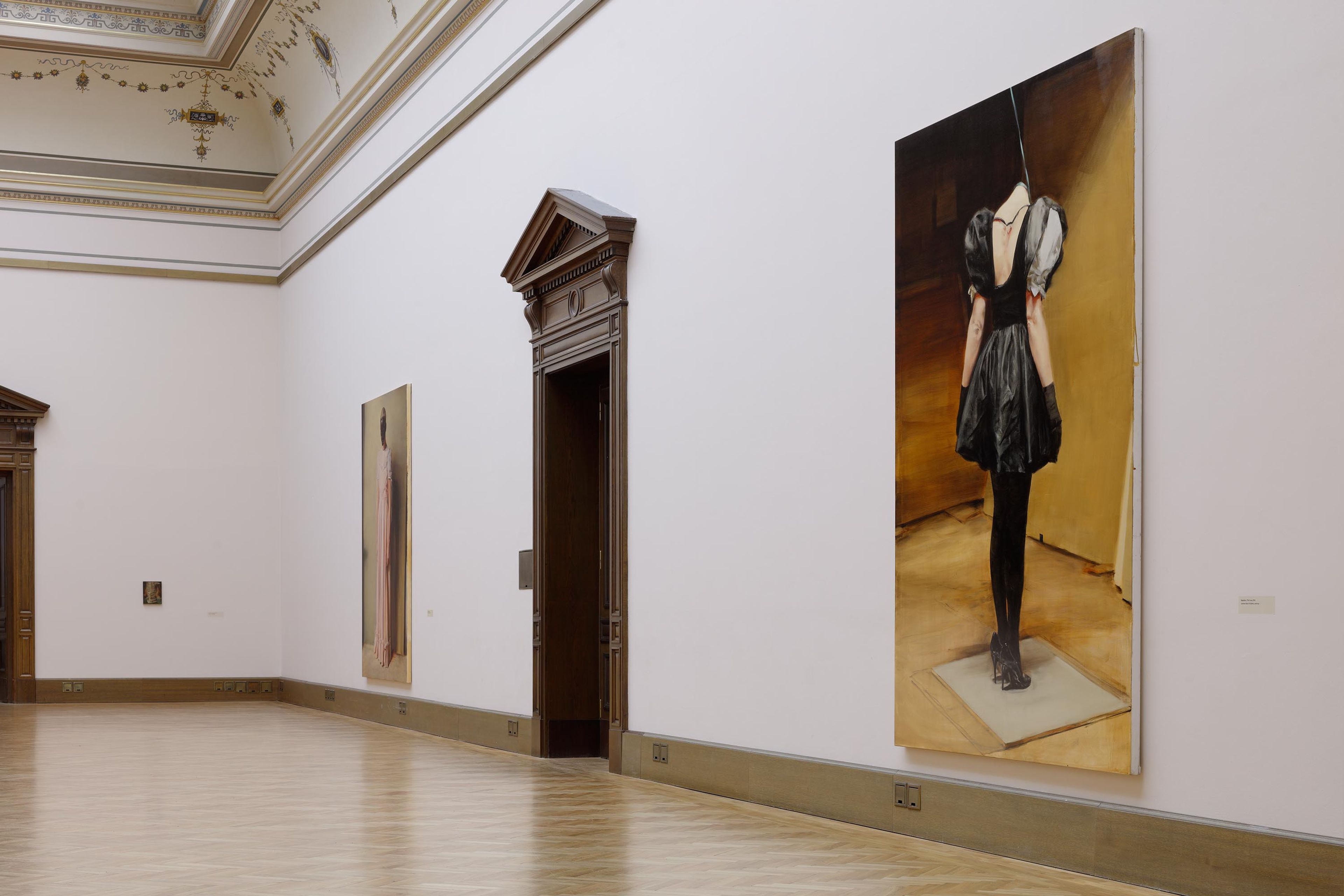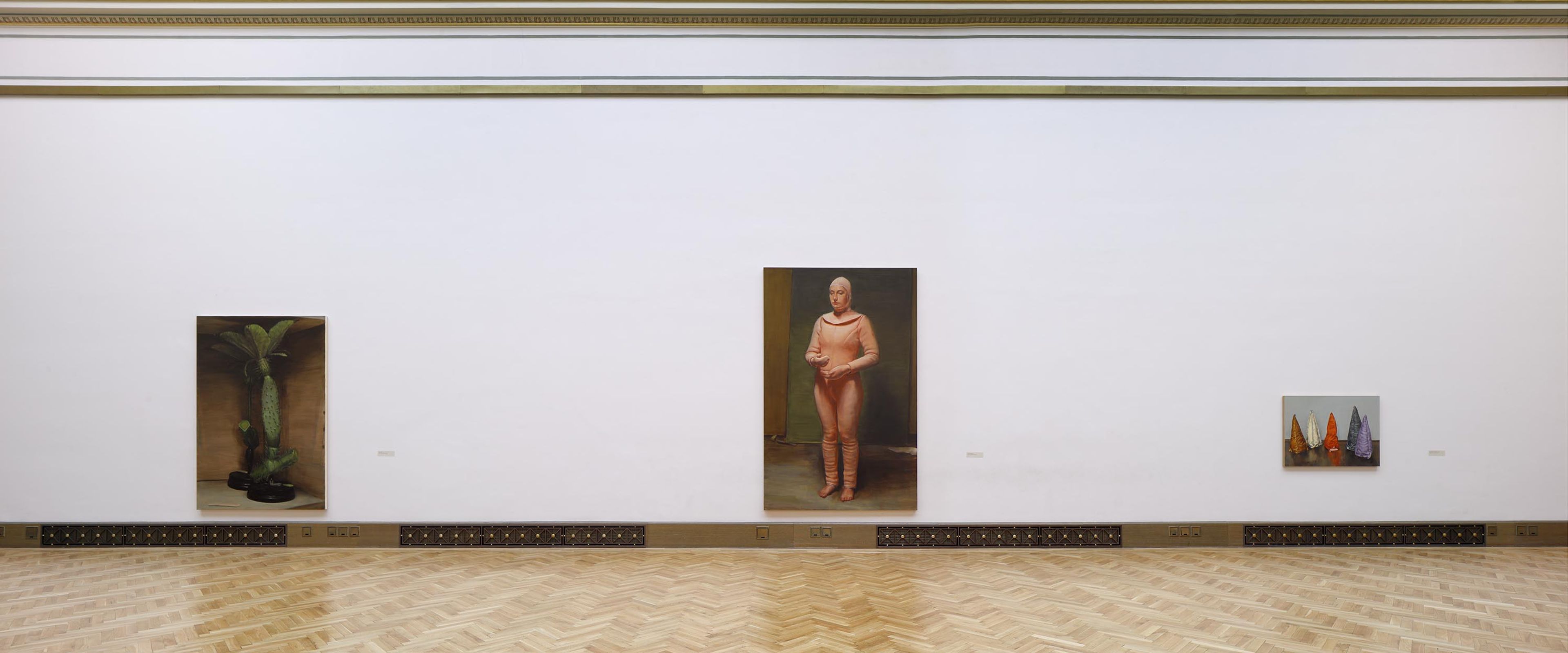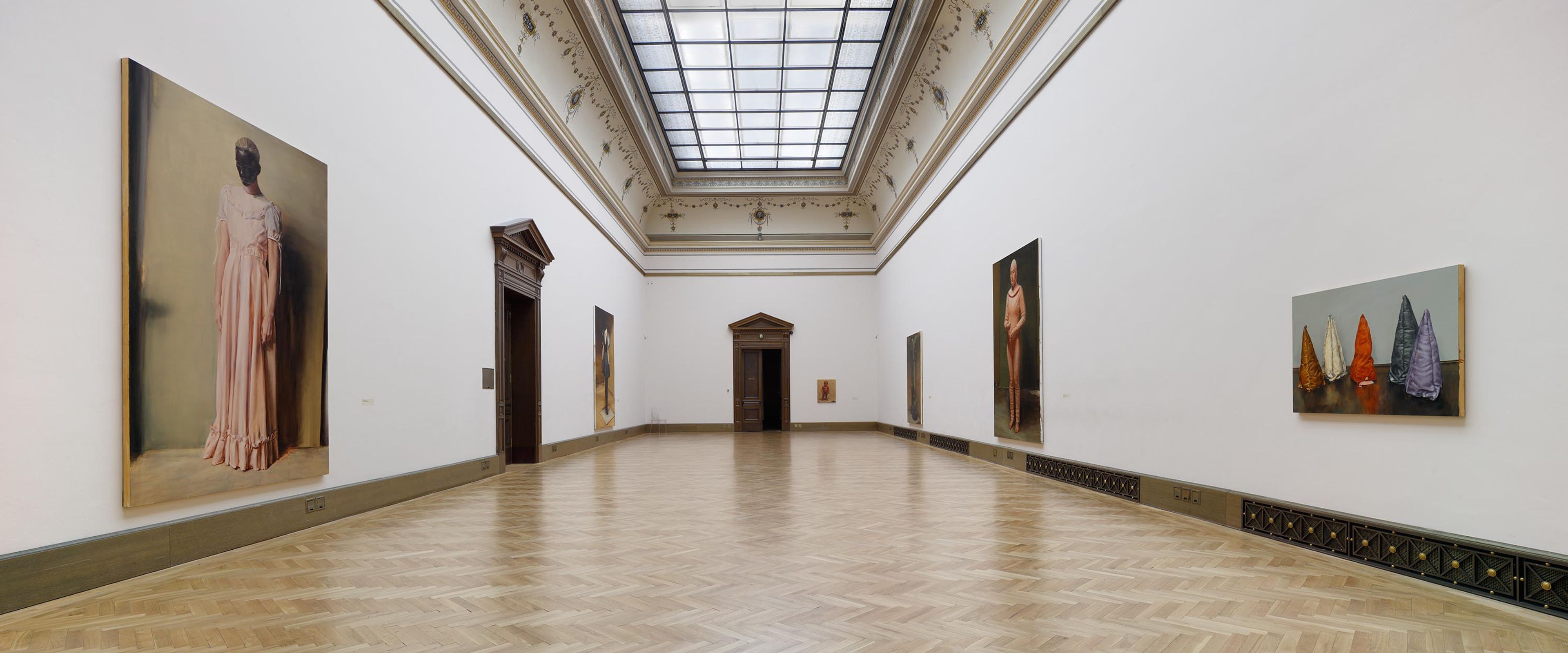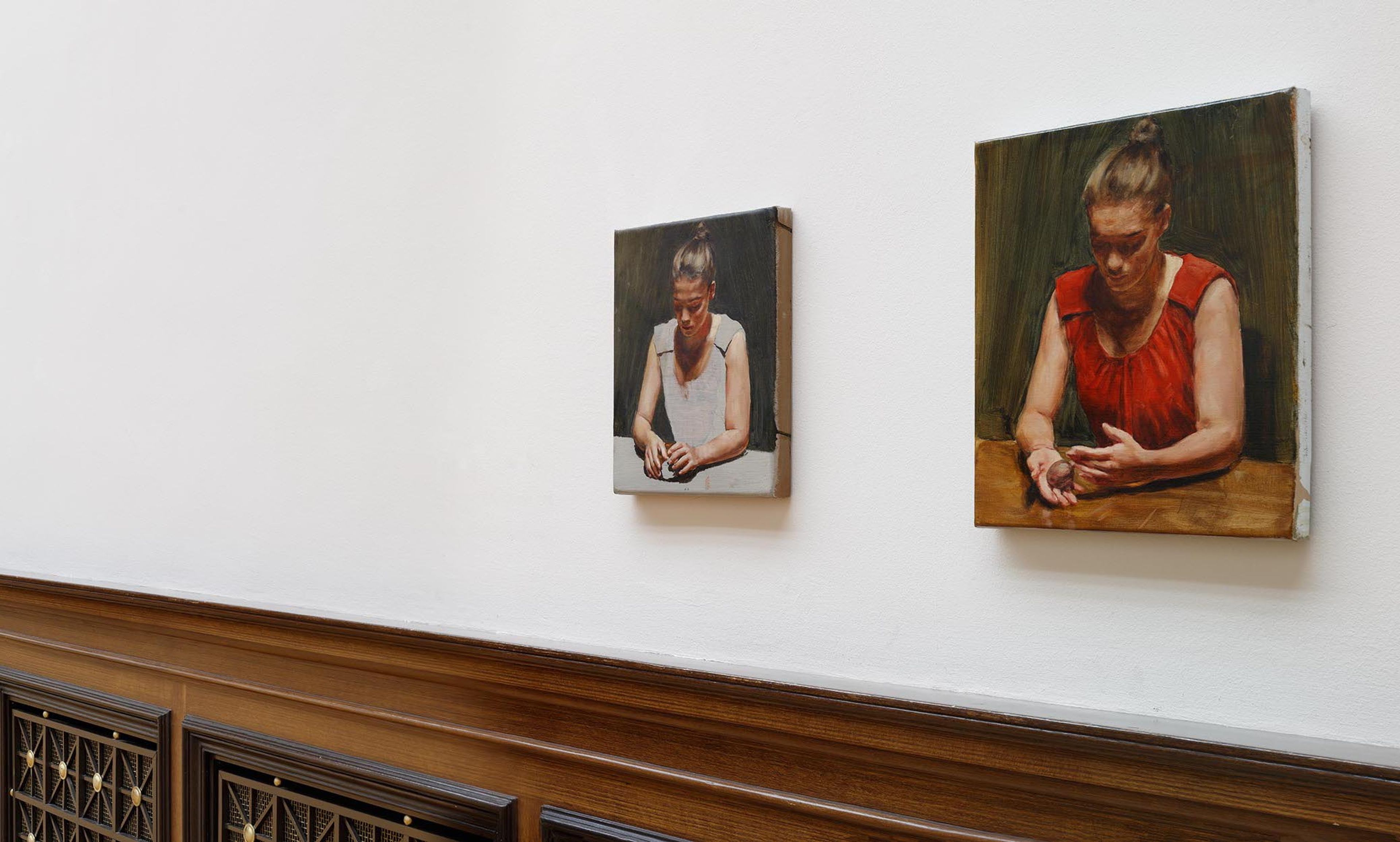Galerie Rudolfinum, Prague
2020
January 22–July 26, 2020 With his innovative approach to painting, the Belgian artist Michaël Borremans (b. 1963) addresses universal themes on his canvases that resonate with a specifically contemporary nuance. His oeuvre is characterised by a strong, unsettlingly psychological aspect. With thirty works on display, The Duck presents a cross-section of Borremans’ painting practice as well as video installations. For the very first time, the artist will also exhibit three of his latest paintings made in Autumn 2019 specifically for Galerie Rudolfinum. “Michaël Borremans’ paintings present static scenes that in actual fact are an illusory reflection of the artist’s imagination. His way of grasping reality has much to do with the pictorial world of Dutch painting from the seventeenth and eighteenth centuries. Even though he often links his pictorial subjects with latently present violence, they stand out with the extraordinary beauty of their execution,” notes the exhibition curator and Galerie Rudolfinum director Petr Nedoma. The specific illusive quality of Borremans’ paintings betrays the artist’s interest in film and photography. Scenes depicted in unnaturally slow motion, precise details and the vibrant character of the paintings attest to an endeavour to bring us closer to the transcendental dimension of spiritual questions, albeit with a lightly ironic tone. Behind this lies the loss of a forgotten, long set aside innocence of the painted image, the refusal of the possibility of direct observation of reality and its reproduction through painting. Today, painting can no longer merely document reality. It always entails a submersion into the long tradition of the imaginative world of painting as such. To accompany the exhibition, Galerie Rudolfinum has published a catalogue containing an essay by exhibition curator Petr Nedoma and text by art historian Petr Vaňous, as well as reproductions of all the exhibited works. The publication was nominated for The Most Beautiful Czech Book of the Year 2020 Award in the “Catalogues” category.
